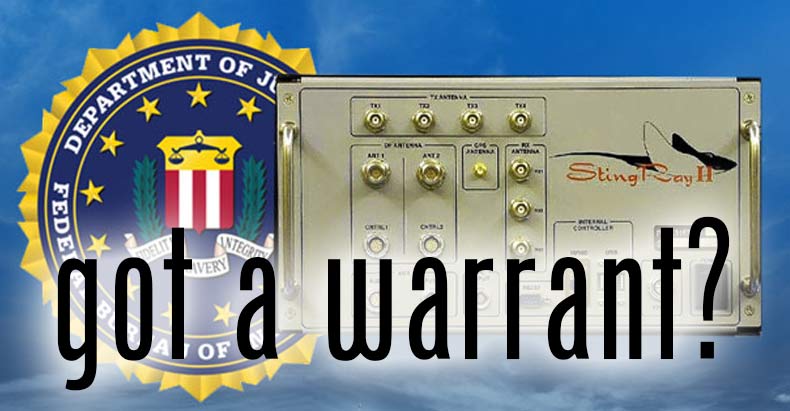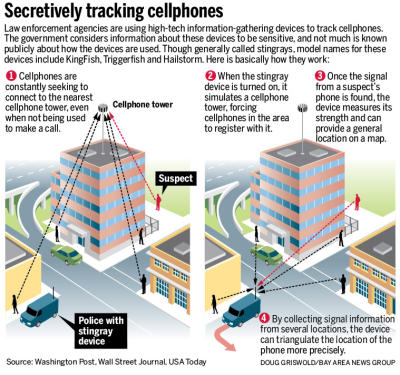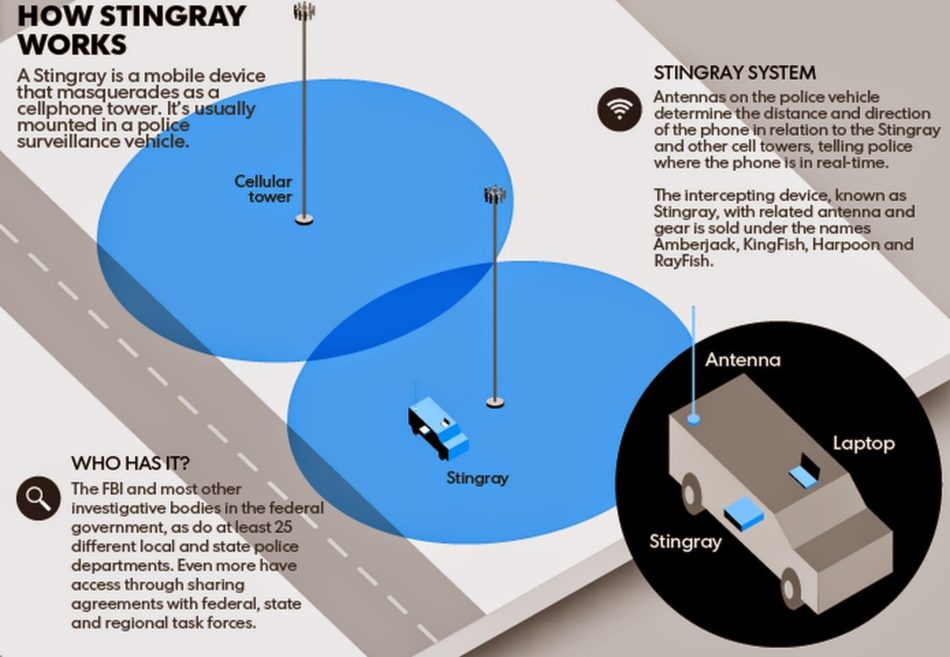 By Alek Hidell
By Alek Hidell
The case of United States vs. Ellis has brought attention to the use of Stingray cellular interceptors by local police and, more recently, the level of cooperation the federal government has provided them. When the Oakland police’s Stingray device – a signal interceptor that mimics a cell phone tower – failed to isolate their suspect, they called in the FBI. The FBI was able to locate the suspect, Purvis Ellis, within minutes. Despite the fact that Ellis was wanted for questioning regarding his involvement in an attempted murder, the police didn’t have a warrant, yet the FBI helped them.
Court documents were released this week, detailing the Oakland PD’s use of the Stingray device in their attempt to track down Ellis. It also detailed the involvement of the FBI, the devices used, and strategies they employed to catch their suspect. The Oakland PD, at the time, frequented the use of court orders to obtain permission to utilize the Stingray device, with a court order from a state attorney. This was covered under the umbrella of a trap and trace device. Now, in the state of California – and federally for that matter – police and prosecutors must obtain a warrant before using a cellular interceptor device like the Stingray.
 Prosecutors have claimed thus far that neither the Oakland PD, nor the FBI required a warrant that night, as there were exigent circumstances. This thin argument is unlikely to hold up. Exigency is defined by an imminent need to take action to prevent death, or bodily harm, or destruction of evidence, etc. Location of a wanted subject is a stretch to cite potential dangers to the community. The prosecution wants to hold a closed hearing without the public and defense, if they are forced to disclose sensitive information. Unlikely this will fly; there is a significant chance that the FBI will be forced to turn over the details on how this eavesdropping piece of technology works.
Prosecutors have claimed thus far that neither the Oakland PD, nor the FBI required a warrant that night, as there were exigent circumstances. This thin argument is unlikely to hold up. Exigency is defined by an imminent need to take action to prevent death, or bodily harm, or destruction of evidence, etc. Location of a wanted subject is a stretch to cite potential dangers to the community. The prosecution wants to hold a closed hearing without the public and defense, if they are forced to disclose sensitive information. Unlikely this will fly; there is a significant chance that the FBI will be forced to turn over the details on how this eavesdropping piece of technology works.
In February, the defense introduced 29 different motions for discovery. The prosecution negotiated it down to 16. They fought attempts to gain information about how the Stingray worked, citing the information is law enforcement sensitive. The case has been before the court for three years. During this time, the FBI skirted the issue of how it employs the Stingray and what its exact capabilities are in their daily use.
“It is stunning to me that at this point in the case, the government cannot tell me very clearly what research has been done and what exists or does not exist, relevant to a stingray,” Judge Donna Ryu, a U.S. Magistrate stated, as she presided over the Ellis case. She has given the prosecution two weeks to disclose the Stingray information.
The question arises, as according to Ellis’ lawyer, his phone was deactivated at the time the authorities allegedly used the Stingray to locate him. This draws into question how the device actually works, if it is able to locate a phone that is off or disconnected.
“If OPD or FBI were using that stingray solely to locate Mr. Ellis on that phone, it could not have happened, as the phone was inactive,” said Martha Boersch of the defense team. “The stingray, moreover, it picks up all phones, not just Mr. Ellis’. Clearly they’re picking up who is calling who on what numbers and when, and I think that is material under the case law that we’ve cited.”
How to Disappear Off the Grid Completely (Ad)
Judge Ryu’s ordering of the disclosure of Stingray information came after an hour of back-and-forth over specific details, which the prosecutor was more than happy to dance around.
 Judge Ryu made one stern and final warning to the prosecution:
Judge Ryu made one stern and final warning to the prosecution:
The government had better be very careful, because I don’t want an over-claiming of the [law enforcement] privilege. If there are materials out in the world as to how [stingrays] are used, [those materials are] not a secret. Please be judicious in your application of that privilege.
Sources: RT, Ars Technica, Findlaw.com.
This article (Court Documents Reveal Cooperation Between FBI and Oakland PD in Stingray Case) is a free and open source. You have permission to republish this article under a Creative Commons license with attribution to the author and AnonHQ.com.

I assume the meme here is that two wrongs do make a right?